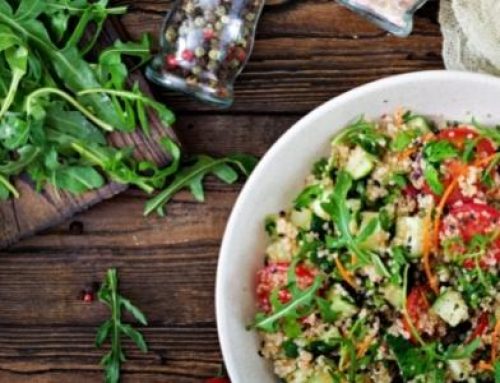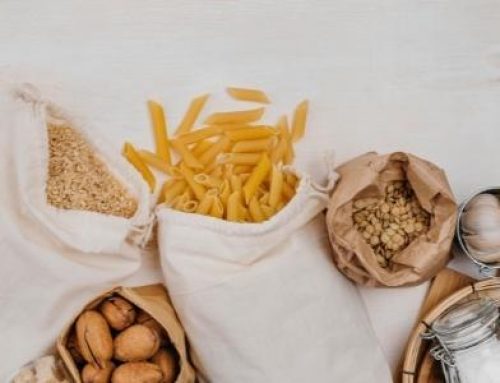 Until a few months ago, I can honestly say that nuts and seeds did not play a starring role in the edge-of-your-seat thriller, that is my diet.
Until a few months ago, I can honestly say that nuts and seeds did not play a starring role in the edge-of-your-seat thriller, that is my diet.
Well actually, that’s a lie. I eat peanut butter on the daily. Seriously. Usually drizzled seductively on my breakfast from a height. My current go to PB? Mayver’s Dark Roasted peanut butter. But, I’m getting off topic.
In particular, nuts and seeds:
- are rich in healthy monounsaturated and polyunsaturated fats,
- are rich in magnesium, vitamin E, manganese and provide a wide range of essential nutrients,
- provide a source of fibre which can help lower cholesterol,
- contain antioxidant compounds such as flavonoids and resveratrol, and
- are also inexpensive, easily stored/portioned and provide a quick on-the-go snack.
Now for those of you who are up to date on your “nut benefits” trivia, you may have noted I didn’t say a good source of protein. While it’s true that they can add to our daily protein intake, I wouldn’t rely on nuts as the primary source of protein in the diet, as nuts and seeds are quite energy dense. You would have to eat a lot of nuts and seeds to meet your protein requirements, and you would end up consuming A LOT of calories as well (more on this later).
But back to the positives.
Numerous studies have also shown that diets including nuts tend to improve blood lipid profiles and are associated with a reduction in a number of chronic disease risk factors. A recent review concluded that higher nut consumption was associated with a lower risk of all-cause mortality, CVD and chronic heart disease.
They may also help with better insulin sensitivity and blood glucose control in diabetics.
Pretty impressive right?
So what’s stopping individuals like me from consuming these crunchy nutrition powerhouses? Why were they limited in my diet for so long?
In my experience there are 2 main reasons my clients may avoid nuts and seeds:
1) They’re seen as high in fat and potentially conducive to weight-gain.
2) They’re unsure where and how to include them in their diet, within meals or make them enjoyable.
In regards to point one, nuts are indeed calorie dense and can quickly add up. In theory, this could potentially contribute to a calorie surplus and therefore weight gain. Perhaps the fat fear mongering of the past when “low-fat” diets were the “in” thing contributed to this view point.
Interestingly, when studies have looked at the inclusion of nuts in addition to the individual’s normal diet, there has been a distinct lack of weight gain. Authors speculate that this may be due to nuts having a fairly satiating response which results in subjects compensating for the calories from nuts by subconsciously reducing energy intake at meals later in the day. In simple terms, it seems that nuts tend to make us feel full and reduces how much we eat at later meals.
So fear not the energy density of nuts!
From a practitioner standpoint, trust me when I say that nuts, in the majority of cases, are not a key culprit in weight gain.
In saying that, not all nuts or nut products are created equal. With some forms of our nutty friends more likely to be over consumed than others, whether we’re aware of it or not.
Roasted, salted or flavoured nuts for instance.
They can be a mindless eating trap waiting to happen. One moderate handful can quickly lead to several not so mindful fistfuls which sends calories soaring. As soon as we add sweetness or salt to something that contains fats (even healthy ones) the palatability is kicked up a notch, and it becomes much harder for our body to naturally regulate our intake.
Also be wary of nut bars and clusters.
Nuts + a sweet binding agent + some well-placed salt = sweet, salty, crunchy goodness and a one-way street to an empty packet/box. When “health food” producers take minimally processed ingredients and mix them together, not only do they become more palatable, but we’re also more likely to eat more of a food that is perceived or marketed as healthy. These foods aren’t unhealthy, but be conscious of the volumes you consume of seedy and nutty ‘health foods’.
This leaves me to address point 2.
I’ve talked to lots of clients who are unsure of how to include nuts and seeds within their diet, especially if they’re trying to reduce the highly palatable options above. But there are a number of ways we can include nuts and seeds within our diet to get all the benefits they provide. Here are some of my favourite ways to include them:
- As snacks between meals or as part of a trail mix. Bonus points for eating shelled peanuts which make you extra mindful and prolong the “eating experience”.
- On top of plain yoghurt with some added fruit (my favourite at the moment is macadamias and raspberries). Try this Coconut Granola recipe!
- In stir fry’s such as this Chicken, Cashew and Vegetable Stir Fry.
- Sprinkled on top of salads and vegetable dishes to add texture or in your pastas like this Toasted Pine Nut and Chicken Pasta.
The moral of the story is that nuts and seeds can be great. But like most foods, they are best consumed in their natural state, when used as snacks or added in small amounts as a texture factor to meals. Be wary of processed nut based products, which add sugar and salt. These hit all the right notes for overconsumption.
Nuts have a ton of benefits and should have a place in all diets, except those with allergies or intolerances. If you’re unsure how to include them within your diet, come and have a chat with me at The Healthy Eating Hub. I guarantee that nuts and seeds will add to your food enjoyment as well as your health.
If you’d like further help with your nutrition please click below:
References:
Tan SY, Mattes RD. Appetitive, dietary and health effects of almonds consumed with meals or as snacks: a randomised, controlled trial. European journal of clinical nutrition. 2013 Nov 1;67(11):1205-14.
Hollis J, Mattes R. Effect of chronic consumption of almonds on body weight in healthy humans. British Journal of Nutrition. 2007 Sep 1;98(03):651-6.
Martin N, Germanò R, Hartley L, Adler AJ, Rees K. Nut consumption for the primary prevention of cardiovascular disease. The Cochrane Library. 2015 Jan 1.
Mayhew AJ, de Souza RJ, Meyre D, Anand SS, Mente A. A systematic review and meta-analysis of nut consumption and incident risk of CVD and all-cause mortality. British Journal of Nutrition. 2016 Jan 28;115(02):212-25.
Sabaté J. Nut consumption and body weight. The American journal of clinical nutrition. 2003 Sep 1;78(3):647S-50S.
Fraser GE, Bennett HW, Jaceldo KB, Sabaté J. Effect on body weight of a free 76 kilojoule (320 calorie) daily supplement of almonds for six months. Journal of the American College of Nutrition. 2002 Jun 1;21(3):275-83.





